I was originally going to call this Our Gardens Without Us — a nod to The World Without Us — but I realize this post is definitely about gardens with humans, just not the ones who created them.
I often think about my garden after I leave this planet or this property. My garden is large. The front is probably 80 percent well-established perennials, so it’s easier to maintain, but the back is mostly annuals. It’s by my choosing — I’ve opted to use this space for vegetables and cut flowers and I enjoy the substantial time I spend there. I do wonder about the next owner though — what will happen to the gardens?
Recent experiences have me pondering the possibilities.
Last month I spent a lot of time in a place where I could clearly see how abandoned gardens are happily consumed by native forest, leaving only a straggly fruit tree or a clump of daffodils as evidence of past gardening attempts. I’m going to dedicate a post to that experience soon, so I’ll leave it for now. But a few days ago, I experienced two starkly different options within blocks of one another.
We’re in the Lower Mainland area of British Columbia for some family events over the Easter Weekend. (The Lower Mainland is the most densely populated area of BC and is essentially Vancouver and the adjacent municipalities. People new to the area probably wouldn’t realize they’re travelling across city boundaries; it’s just one sprawl.) We’re staying in Surrey, which, after Vancouver, is the province’s largest municipality and where it seems like construction never ends.
With several hours to kill on Sunday, we did a search for gardens and found the lovely Darts Hill Garden. It was a 22.5-acre park that grew from the original 7.5-acre garden created over 75 years by Francisca and Edwin Darts. When the Darts purchased the property in 1943, it was just stumps left over from logging. They cleared the land and started an orchard, which then morphed into an impressive horticultural collection — most grown from seed — of plants from around the world.
The Darts chose to donate the land to the city, and it is now jointly operated by Surrey and the Darts Hill Garden Conservancy Trust Society. We spent several hours wandering the many meandering paths. (Although I usually am a bit ambivalent about the label–no label debate, in this case I did appreciate that the plants were labelled as the collection was enormous and eclectic.) Francisca had a real “can-do” attitude and seemed to just follow her nose. If something interested her, she tried it out.
So many people want advice about ‘what will I plant,’ ‘what plants go together.’ You know blue/green, you name it, I go ahead and do it. Sometimes I’m right, sometimes I’m wrong, but just remember, always when you do something wrong, you learn more from that more than when you do something right.
Amen, Francisca.
We enjoyed the eclectic nature of the garden and so many plants new to us, in particular the empress tree (Paulownia tomentosa) — it’s not in bloom at the moment but it’s apparently a “traffic stopper” when it is. I loved the structural seed pods.
The yellow magnolia Elizabeth — one of the 23 magnolia varieties on the property — was the show stopper of the day for me though.

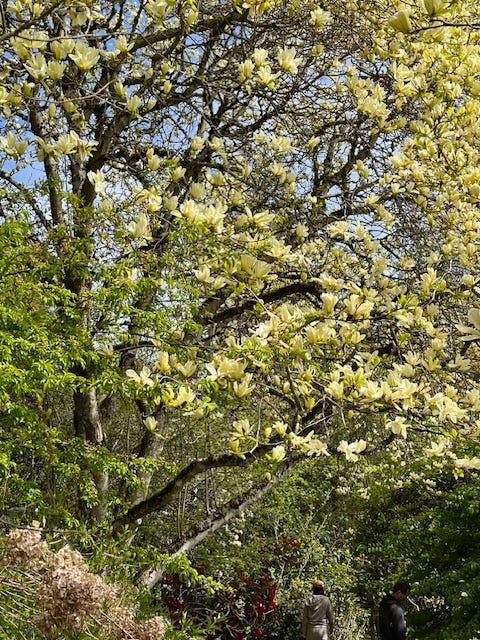
Photos, of course, don’t do the space justice, but here are a few I took. (I normally am not too interested in alpine gardens, but hers was so naturalized under well-established trees, that I was captivated.)
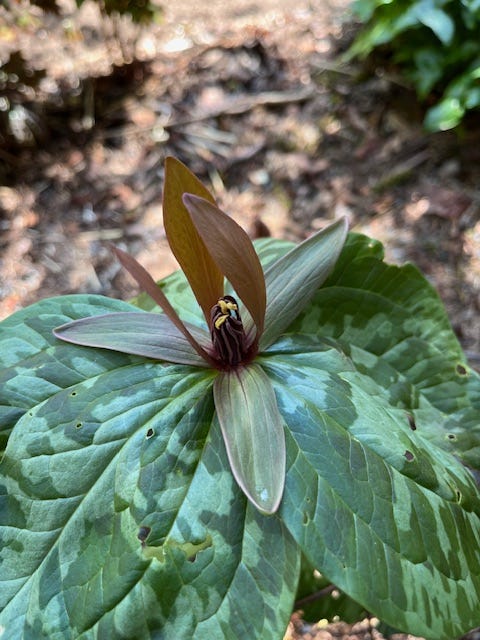
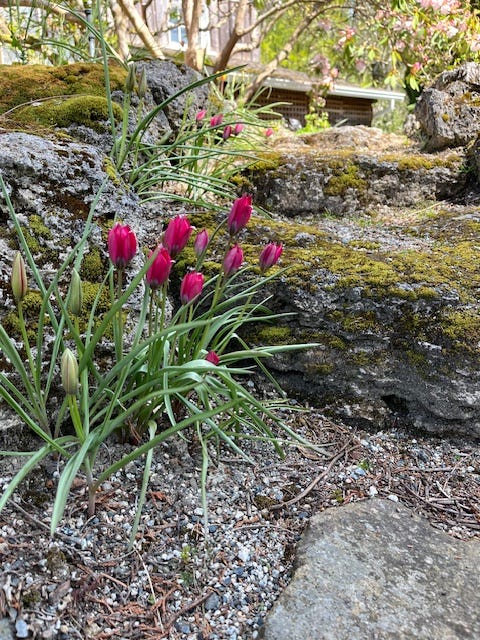
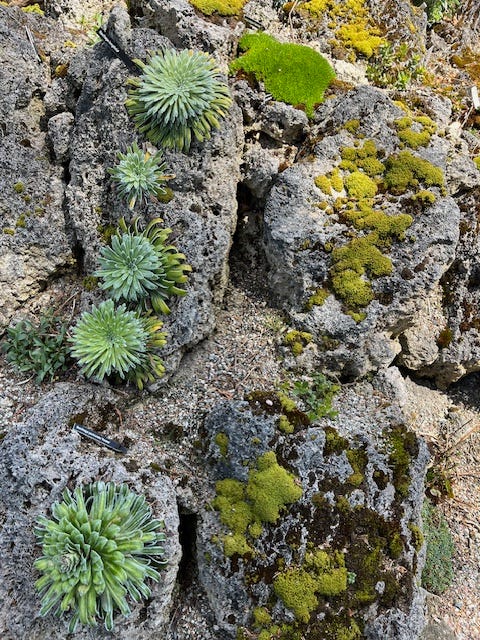

In the evening, when the rest of the gang went to a movie I wasn’t interested in, I went for a walk. I was on an Easter Bunny mission heading to the nearest store a 30-minute walk away being steered by Google Maps. At one point it showed a large greenspace ahead with a nursery smack-dab in the middle. Cool.
This is what I came upon instead:
Wrenhaven Nursery and whatever green had been around it was levelled. Like the area on three sides of the lot, it would soon become densely packed housing.
I couldn’t find much about Wrenhaven Nursery when I searched online after I got home, only that it has been a member in The American Rhododendron Society. I wonder if the person who owned the property just down the street from the block that had once been home to the nursery had bought their rhododendron there, the rhodo that is snugged up to the sign announcing Development Proposal No. 22-0363. (Proposed zoning change from one-acre residential zone to a comprehensive development zone with 56 three-storey units of housing and 123 parking stalls.)
Google Maps led me down 20th Avenue, which ended up being a route with newly built or in the process of being built housing on one side of the street, and properties — some abandoned, some still inhabited — that will soon be scraped clean.
Darts Hill Garden was just a few blocks away. If the property hadn’t been donated and now in the hands of new stewards, this is what it would have looked like. The plants collected over 75 years of little consequence, levelled for housing. As I walked, I looked for evidence of gardens and gardeners, recording what remains of their efforts — fruit trees, rhodos, sweet clumps of violets, plastic plant pots, a wheelbarrow, a split-rail fence, a barn. Across the street “The Boroughs” development, which contains the newly named Oak Meadows Drive despite the lack of oaks or any trees, invites new residents to “create your story.”
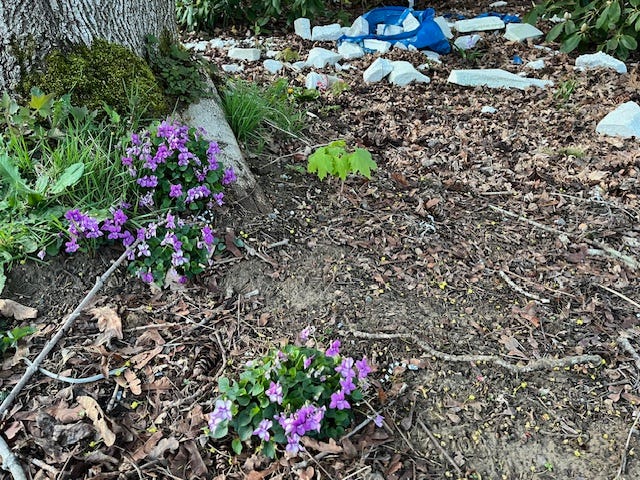
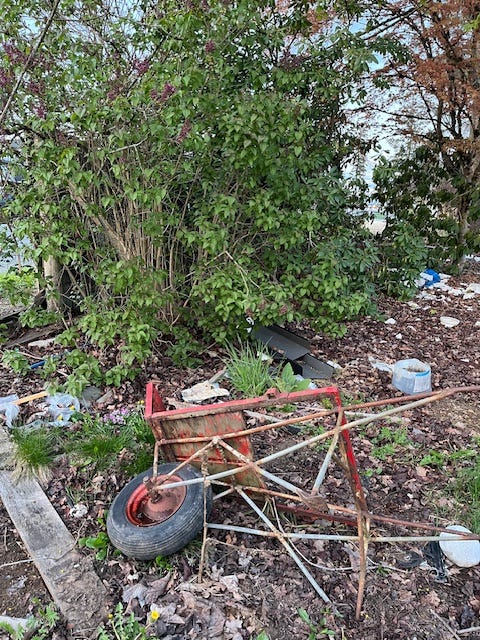
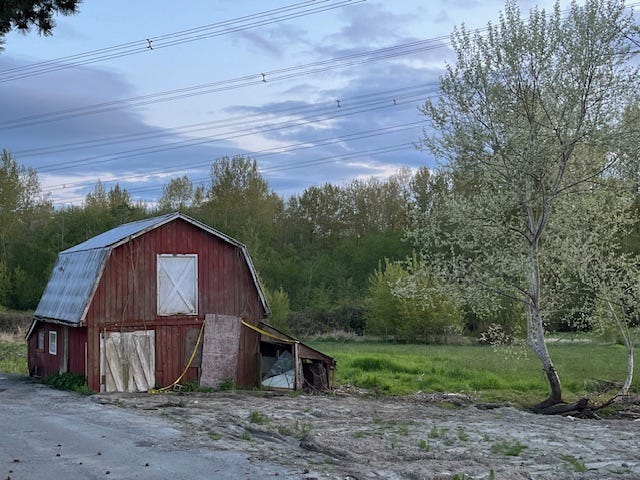
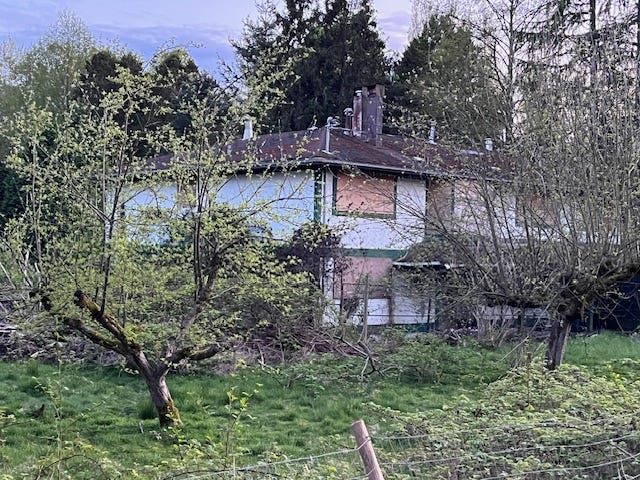
This morning, as I retraced my route, I noticed that those residents can buy farm fresh eggs for $6, just across the street. For now, at least.
I realize this all isn’t new. We take down forests for agriculture and housing. We replace acreages and agricultural land with densified housing. We give subdivisions that have levelled every stick on the land bucolic sounding names like Nest or Raven’s Park or Nature Haus (yeah). (For fun, create your own name for a subdivision.)
I also am fully aware I’m speaking from a privileged place of owning a home on land that was once something else, but the juxtaposition of what we could do and what we usually do was so stark and the examples were in such close proximity that I wanted to get some thoughts down.
There’s a lot at play. Yes, we need housing, and densification can be a good use of space, especially in cities, something that it seems we’re just starting to realize in North America. (What’s being created in this area, just seems to be soul-less sprawl though, which requires everyone to drive everywhere.) But today I’m just feeling a little melancholy for the gardens that once were and the people who created them.
Have you thought about your gardens after you? I’d love to hear from you.

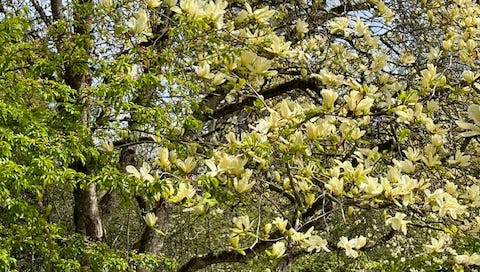


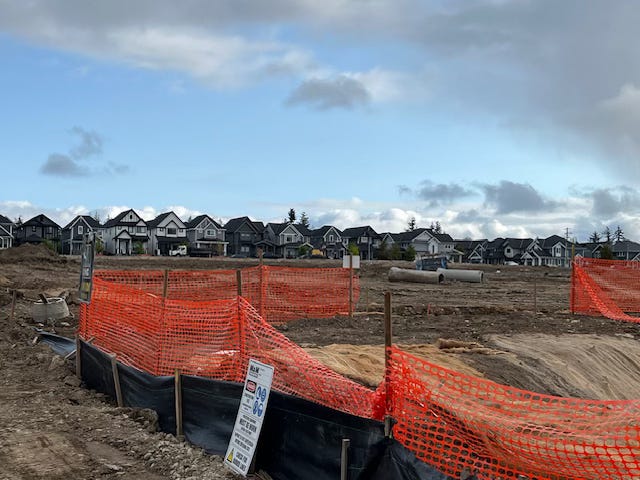
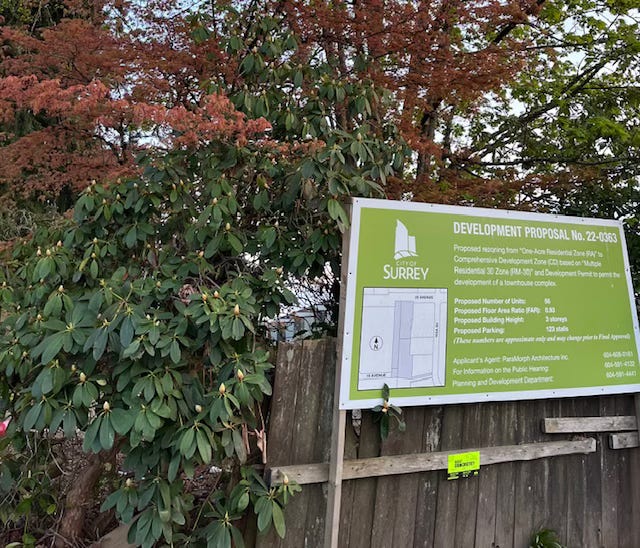
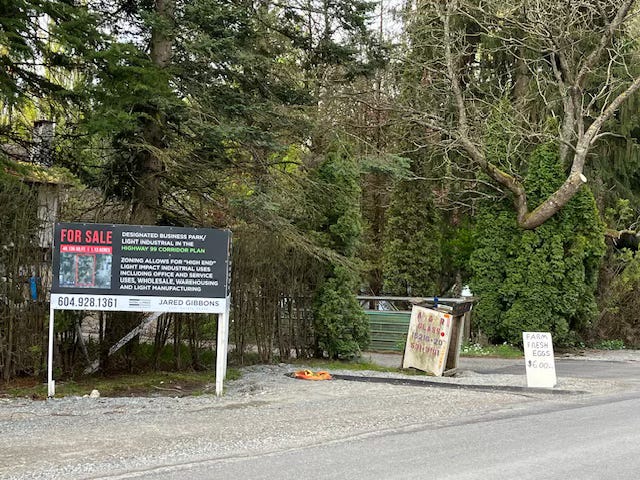
As a city planner by training, I think about land use and the future a lot. Access to greenspace shouldn’t be an afterthought as we plan our developments, and conserving legacy gardens could have a role there. But many of them will change over time.
A Canadian cousin of mine volunteers at Darts Hill garden! We hear about it in her Christmas letter.
Do you and I get the Substack award for mentioning The World Without US in the same 10 day period? 😅
My childhood garden, which I now live near again after 56 years, has been let go to nature. I have very mixed feelings about it.